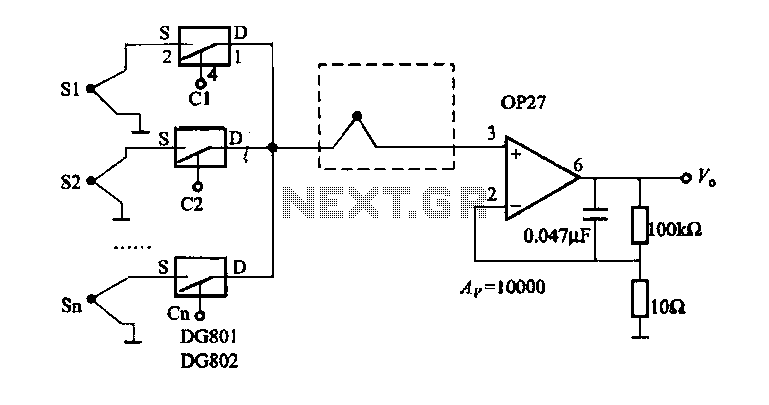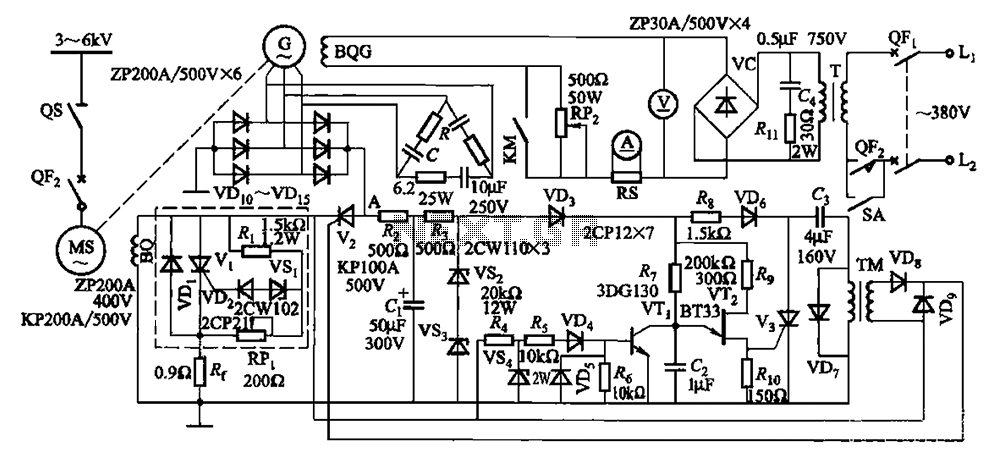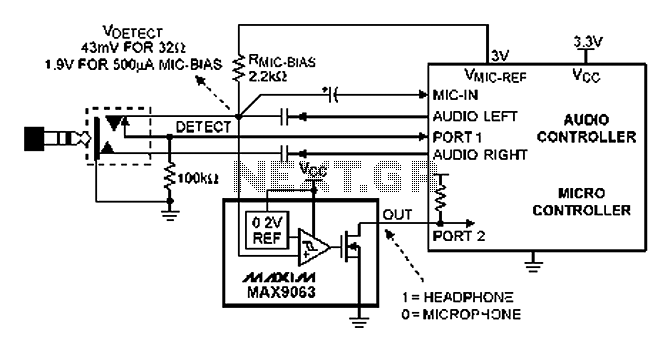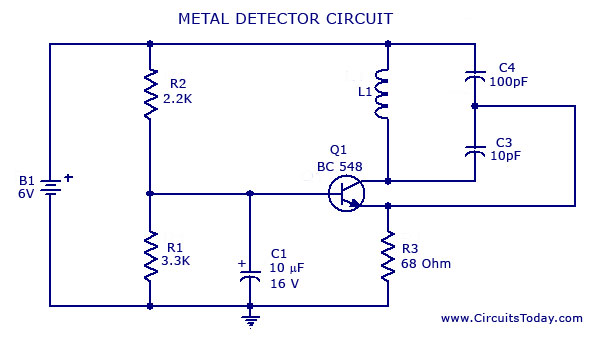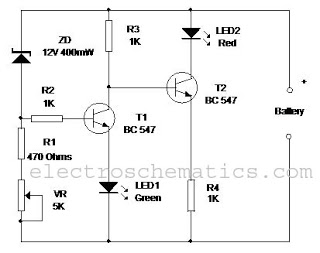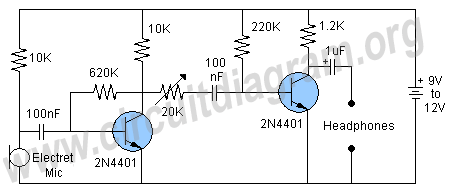
3 band equalizer circuit
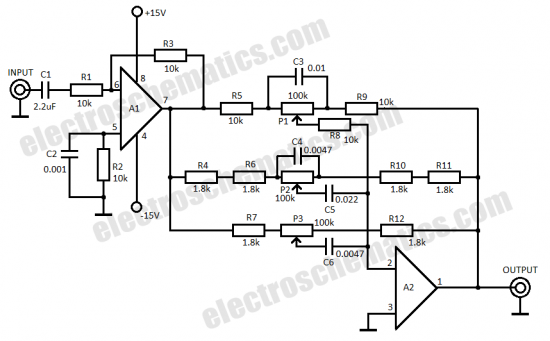
This three-band equalizer circuit functions as an active filter network for bass, mid, and high audio frequencies. It is built around the LM833 operational amplifier from National Semiconductors. The output of this three-way graphic equalizer is configured to be DC coupled; however, due to minor DC variations caused by the 100K potentiometers in the feedback paths of op-amp A2, a coupling capacitor may be necessary. The maximum equalization range is approximately 15 dB. At the midpoint of the potentiometer, the noise attenuation reaches about 90 dB, with a bandwidth of 1 MHz and a gain of 0 dB. The gain can be adjusted using resistor R2 according to the formula: Vu = R2/R1.
This three-band equalizer circuit is designed to enhance audio signals by allowing the user to adjust the levels of bass, midrange, and treble frequencies independently. The active filter network utilizes the LM833 op-amp, known for its low noise and high performance, making it suitable for audio applications.
The circuit typically includes three separate filter stages, each corresponding to one of the frequency bands. Each stage employs a potentiometer to adjust the gain for that specific frequency range, allowing for precise control over the audio output. The feedback configuration of the op-amp is crucial, as it determines the frequency response and the overall performance of the equalizer.
The DC coupling of the output is beneficial for maintaining signal integrity; however, the potential for DC offsets from the potentiometers necessitates the inclusion of a coupling capacitor to block any unwanted DC components. This ensures that only the AC audio signal is passed to the subsequent stages or output devices.
The equalizer's maximum range of 15 dB provides sufficient headroom to boost or cut frequencies as desired, while the 90 dB noise attenuation at the center position ensures that the audio output remains clean and free from interference. The specified bandwidth of 1 MHz indicates that the circuit can handle a wide range of audio frequencies, making it suitable for high-fidelity applications.
The gain adjustment formula, Vu = R2/R1, allows for further customization of the equalizer's response. By altering R2, the user can modify the gain of the circuit to suit specific audio requirements, enhancing the versatility of the equalizer in various audio processing scenarios. Overall, this three-band equalizer circuit represents an effective tool for audio signal manipulation, providing users with the ability to tailor their sound to their preferences.This 3 band equalizer circuit is an active filter network for bass, mid and high audio ranges. It is designed around the LM833 opamp from National Semiconductors. The output of this 3 way graphic equalizer is designed to be DC coupled, however due to slight DC variations through the 100K potentiometers at the feedback lines of the opamp A2, a coup ling capacitor might be needed. The maximum equalizer range is about 15 dB. In the middle position of potentiometer, the noise attenuation is about 90 dB with a bandwidth of 1 MHz and a gain of 0 dB. The gain can be changed through R2 using the following formula: Vu = R2/R1. 🔗 External reference
This three-band equalizer circuit is designed to enhance audio signals by allowing the user to adjust the levels of bass, midrange, and treble frequencies independently. The active filter network utilizes the LM833 op-amp, known for its low noise and high performance, making it suitable for audio applications.
The circuit typically includes three separate filter stages, each corresponding to one of the frequency bands. Each stage employs a potentiometer to adjust the gain for that specific frequency range, allowing for precise control over the audio output. The feedback configuration of the op-amp is crucial, as it determines the frequency response and the overall performance of the equalizer.
The DC coupling of the output is beneficial for maintaining signal integrity; however, the potential for DC offsets from the potentiometers necessitates the inclusion of a coupling capacitor to block any unwanted DC components. This ensures that only the AC audio signal is passed to the subsequent stages or output devices.
The equalizer's maximum range of 15 dB provides sufficient headroom to boost or cut frequencies as desired, while the 90 dB noise attenuation at the center position ensures that the audio output remains clean and free from interference. The specified bandwidth of 1 MHz indicates that the circuit can handle a wide range of audio frequencies, making it suitable for high-fidelity applications.
The gain adjustment formula, Vu = R2/R1, allows for further customization of the equalizer's response. By altering R2, the user can modify the gain of the circuit to suit specific audio requirements, enhancing the versatility of the equalizer in various audio processing scenarios. Overall, this three-band equalizer circuit represents an effective tool for audio signal manipulation, providing users with the ability to tailor their sound to their preferences.This 3 band equalizer circuit is an active filter network for bass, mid and high audio ranges. It is designed around the LM833 opamp from National Semiconductors. The output of this 3 way graphic equalizer is designed to be DC coupled, however due to slight DC variations through the 100K potentiometers at the feedback lines of the opamp A2, a coup ling capacitor might be needed. The maximum equalizer range is about 15 dB. In the middle position of potentiometer, the noise attenuation is about 90 dB with a bandwidth of 1 MHz and a gain of 0 dB. The gain can be changed through R2 using the following formula: Vu = R2/R1. 🔗 External reference
